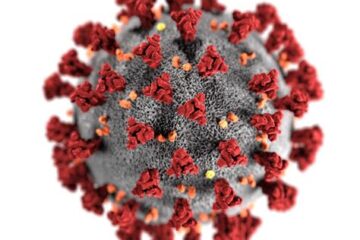
In this post – Cranberries for preventing urinary tract infections @ יואל קסלר we discuss new data published in the Cochrane Library that the consumption of cranberry juice does is supported in the reduction of culture positive UTI.
בפוסט זה – חמוציות למניעת דלקות בדרכי השתן @ יואל קסלר- אנו דנים בנתונים חדשים שפורסמו בספריית קוכריין כי צריכת מיץ חמוציות נתמכת בהפחתת דלקת בדרכי השתן חיובי לתרבות.
Cranberries for preventing urinary tract infections
Authors' declarations of interest
Version published: 17 April 2023 Version history
https://doi.org/10.1002/14651858.CD001321.pub6
Background
"Cranberries contain proanthocyanidins (PACs), which inhibit the adherence of p‐fimbriated Escherichia coli to the urothelial cells lining the bladder. Cranberry products have been used widely for several decades to prevent urinary tract infections (UTIs). This is the fifth update of a review first published in 1998 and updated in 2003, 2004, 2008, and 2012.
Objectives
To assess the effectiveness of cranberry products in preventing UTIs in susceptible populations.
Search methods
We searched the Cochrane Kidney and Transplant Specialised Register up to 13 March 2023 through contact with the Information Specialist using search terms relevant to this review. Studies in the Register are identified through searches of CENTRAL, MEDLINE, and EMBASE, conference proceedings, the International Clinical Trials Register Search Portal (ICTRP) and ClinicalTrials.gov.
Selection criteria
All randomised controlled trials (RCTs) or quasi‐RCTs of cranberry products compared with placebo, no specific treatment or other intervention (antibiotics, probiotics) for the prevention of UTIs were included.
Data collection and analysis
Two authors independently assessed and extracted data. Information was collected on methods, participants, interventions and outcomes (incidence of symptomatic UTIs, positive culture results, side effects, adherence to therapy). Risk ratios (RR) with 95% confidence intervals (CI) were calculated where appropriate. Study quality was assessed using the Cochrane risk of bias assessment tool. Confidence in the evidence was assessed using the Grading of Recommendations Assessment, Development and Evaluation (GRADE) approach.
Main results
For this update 26 new studies were added, bringing the total number of included studies to 50 (8857 randomised participants). The risk of bias for sequence generation and allocation concealment was low for 29 and 28 studies, respectively. Thirty‐six studies were at low risk of performance bias, and 23 studies were at low risk of detection bias. Twenty‐seven, 41, and 17 studies were at low risk of attrition bias, reporting bias and other bias, respectively.
Forty‐five studies compared cranberry products with placebo or no specific treatment in six different groups of participants. Twenty‐six of these 45 studies could be meta‐analysed for the outcome of symptomatic, culture‐verified UTIs. In moderate certainty evidence, cranberry products reduced the risk of UTIs (6211 participants: RR 0.70, 95% CI 0.58 to 0.84; I² = 69%). When studies were divided into groups according to the treatment indication, cranberry products probably reduced the risk of symptomatic, culture‐verified UTIs in women with recurrent UTIs (8 studies, 1555 participants: RR 0.74, 95% CI 0.55 to 0.99; I² = 54%), in children (5 studies, 504 participants: RR 0.46, 95% CI 0.32 to 0.68; I² = 21%) and in people with a susceptibility to UTIs due to an intervention (6 studies, 1434 participants: RR 0.47, 95% CI 0.37 to 0.61; I² = 0%). However, in low certainty evidence, there may be little or no benefit in elderly institutionalised men and women (3 studies, 1489 participants: RR 0.93, 95% CI 0.67 to 1.30; I² = 9%), pregnant women (3 studies, 765 participants: RR 1.06, 95% CI 0.75 to 1.50; I² = 3%), or adults with neuromuscular bladder dysfunction with incomplete bladder emptying (3 studies, 464 participants: RR 0.97, 95% CI 0.78 to 1.19; I² = 0%).
Other comparisons were cranberry products with probiotics (three studies) or antibiotics (six studies), cranberry tablets with cranberry liquid (one study), and different doses of PACs (two studies).
Compared to antibiotics, cranberry products may make little or no difference to the risk of symptomatic, culture‐verified UTIs (2 studies, 385 participants: RR 1.03, 95% CI 0.80 to 1.33; I² = 0%) or the risk of clinical symptoms without culture (2 studies, 336 participants: RR 1.30, 95% CI 0.79 to 2.14; I² = 68%). Compared to probiotics, cranberry products may reduce the risk of symptomatic, culture‐verified UTIs (3 studies, 215 participants: RR 0.39, 95% CI 0.27 to 0.56; I = 0%). It is unclear whether efficacy differs between cranberry juice and tablets or between different doses of PACs as the certainty of the evidence was very low.
The number of participants with gastrointestinal side effects probably does not differ between those taking cranberry products and those receiving placebo or no specific treatment (10 studies, 2166 participants: RR 1.33, 95% CI 1.00 to 1.77; I² = 0%; moderate certainty evidence). There was no clear relationship between compliance with therapy and the risk for repeat UTIs. No difference in the risk for UTIs could be demonstrated between low, moderate and high doses of PACs.
Authors' conclusions
This update adds a further 26 studies taking the total number of studies to 50 with 8857 participants. These data support the use of cranberry products to reduce the risk of symptomatic, culture‐verified UTIs in women with recurrent UTIs, in children, and in people susceptible to UTIs following interventions. The evidence currently available does not support its use in the elderly, patients with bladder emptying problems, or pregnant women."
For more interesting articles like this check out our Blog.


